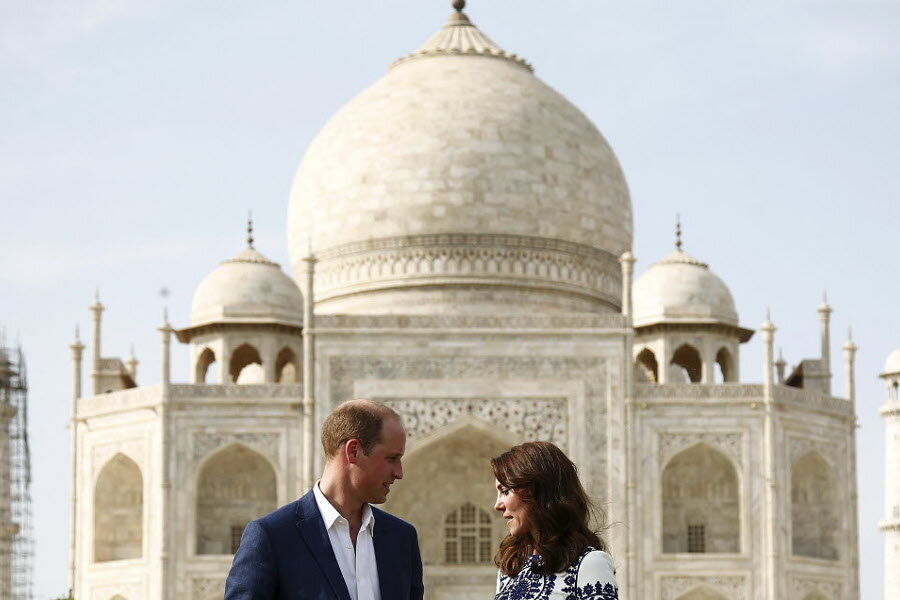William and Kate retrace Diana's steps to Taj Mahal
Loading...
| AGRA, India
Where Princess Diana went alone, her son Prince William went with his wife Kate on Saturday – the Taj Mahal – bringing the British royal couple's week-long South Asian tour to a poignant close.
William and Kate sat together on the same bench where his late mother was photographed on her solitary visit in 1992.
Kate wore a slimline white dress with a navy pattern by Indian-American designer Naeem Khan, while William braved the intense afternoon heat in a blazer and open-necked shirt.
The Duke and Duchess of Cambridge were rounding off a tour in which they met another glamorous young royal couple, the king and queen of Bhutan, and saw rhinos and elephants in a national park in Assam.
The final stop at the Taj Mahal was an emotional one for William, who was 15 when Diana died in a car crash in 1997. He has often spoken of how much he misses his mother, and has said that he thinks of her every day.
Diana's solo visit to the 17th-century mausoleum – built by Mughal Emperor Shah Jahan in memory of his favorite wife – came to symbolize her unhappy marriage to Prince Charles.
The couple separated months later.
Three of the Taj Mahal's four minarets were swathed in scaffolding for repairs. Still, images of William and Kate sitting before the onion-domed monument, its ivory colored marble translucent in the afternoon sunshine, were striking.
Asked about her impression of the Taj Mahal, Kate could be heard saying over the clatter of camera shutters: "It's really stunning."
It was raining earlier in the day when the couple flew out of Bhutan's only international airport, a day after they trekked to a Buddhist monastery 10,000 feet up a mountain.
They landed in Agra in afternoon temperatures that reached 105 degrees Fahrenheit. Much of India is suffering a heatwave and severe drought after two years of failed monsoon rains.
(Additional reporting by Sunil Kataria in Thimpu; Writing by Douglas Busvine; Editing by Louise Ireland)







